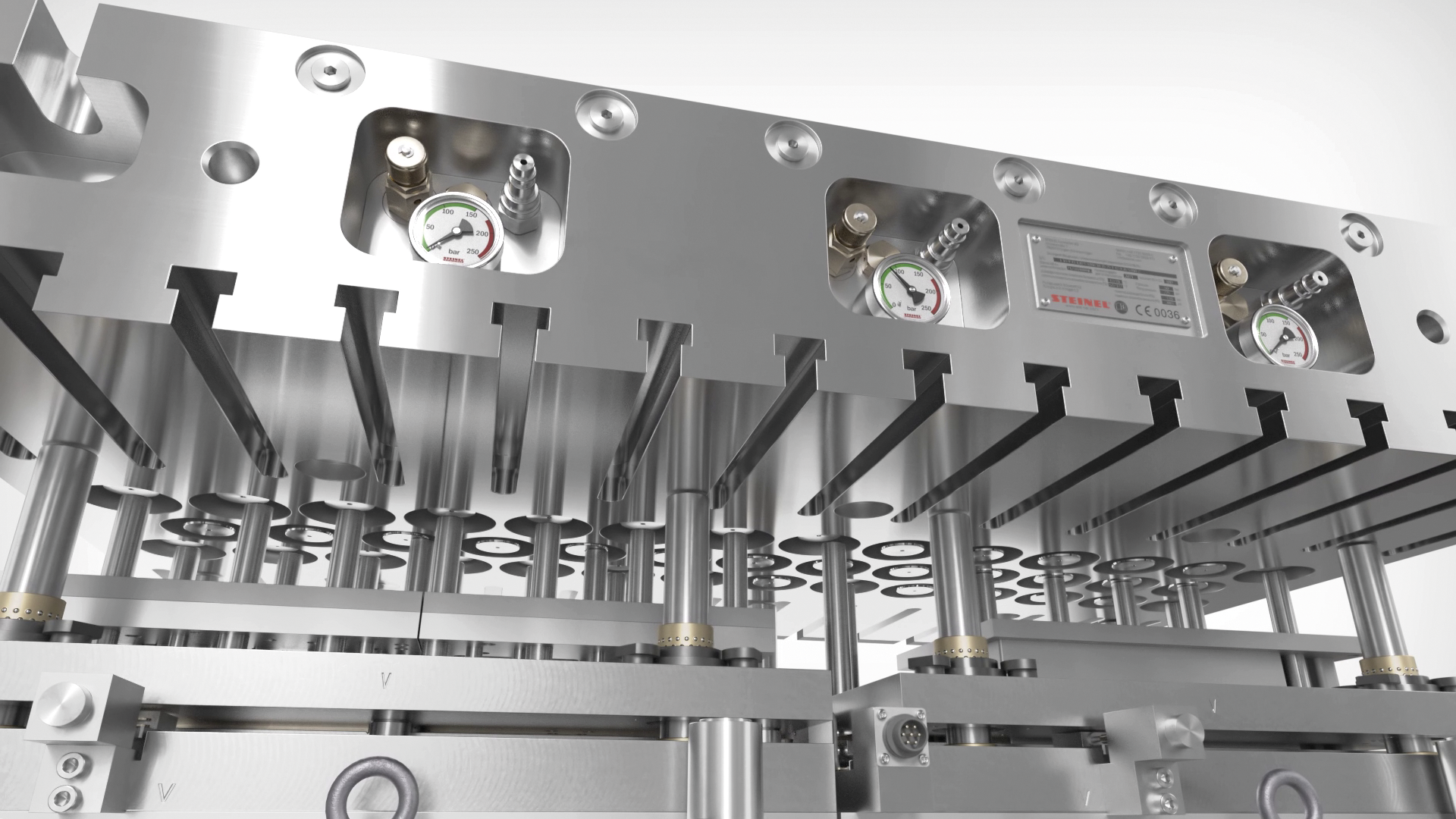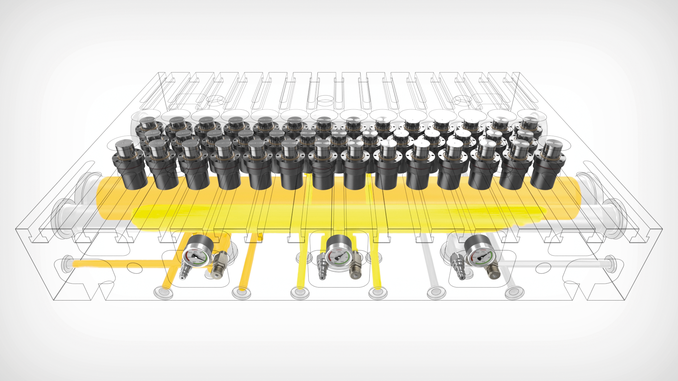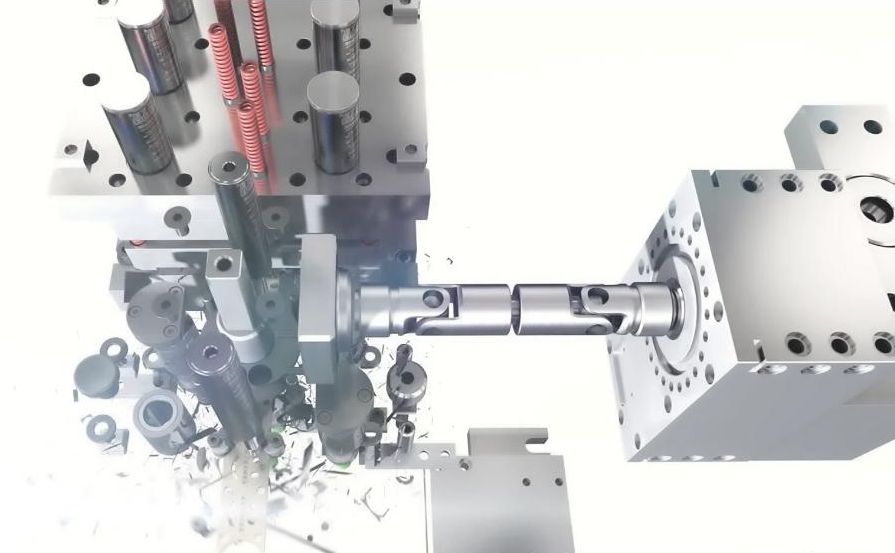
Where sheet metal is punched, perforated, bent or cut in continuous production, tools often move at 1,200 strokes per minute and more. Under these stresses in the tightest of spaces, gas springs score: compact, with definable force curves and long service lives, economical. When it has to be even faster, even smaller and even more durable, tank plates are used.

© Steinel
Thin material and narrow strips require appropriately dimensioned tools when punching, perforating, cutting or forming. In the case of suspension elements, every millimeter counts. In addition, consistent manufacturing quality requires permanently consistent hold-down forces. Gas springs meet these requirements. Instead of metal or plastic, compressed nitrogen supplies the required force here. They require less installation space than mechanical spring elements for the same stroke height and provide more constant force curves. The long service life of the springs is ensured by new sealing materials, lifetime lubrication and a piston with two-point bearings. Thus, several million strokes are possible.
Depending on the application, the nitrogen-filled gas springs are used individually or as a composite system. For most installation situations and applications, Steinel supplies the springs from stock. Where deviating specifications are required, the standard parts specialist manufactures them to customer specifications at the Schwenningen site.
Several gas springs can be combined by means of lines to form so-called hose compound systems. A control fitting informs about the system pressure. The always balanced force ratio in the composite system avoids one-sided loads in the mold, and the slightly higher nitrogen volume causes a somewhat flatter pressure rise. This leads to longer service lives and more process reliability. In addition, the system pressure can be adjusted during production and an external nitrogen tank can be connected to further reduce the force increase.
The same advantages are offered by panel composite systems – with a more robust and compact design. They connect gas springs and control armature via holes in the composite plate. The increased nitrogen volume causes an even flatter increase in force. To make the right forces available in the right place, panel composite systems can have multiple pressure circuits.

© Steinel
Tank plate – the solution for the highest requirements
Steinel tank plates consist of a metal plate with volume holes as integrated nitrogen reservoirs, space-saving tank plate cylinders and control fittings. The control, filling and pressure regulation is carried out either directly at the plate in the mold or, if this is not accessible, via a control fitting remote by hose line. The tank plate systems, which are always designed specifically for the mold, are suitable for particularly high requirements and complex manufacturing tasks. Multiple pressure circuits can also be integrated into tank plates.
The Steinel tank plates allow a filling pressure of over 150 bar and feature a 40 percent lower force increase factor compared to stand-alone gas springs as well as a uniform lifting force of all pressure cylinders in a pressure circuit. The very low pressure and force increase over the entire stroke range and the constant maximum force ensure consistent production quality.
This is made possible by volume holes in the mold plate designed for maximum gas volume. The high nitrogen volume ensures an elastic and tool-friendly manufacturing process as well as lower operating temperatures compared to other nitrogen systems. A pressure monitor integrated in the fitting can stop the press immediately in the event of irregularities to prevent faulty production or increased die wear. The result is extremely long service lives, with 10 million strokes not uncommon for Steinel tank plates. Because they have few sealing points, tank plates are easy and quick to maintain and install, and downtime is minimized.
High-speed tank plates generate maximum forces in minimum space due to their high packing density. They show their strengths wherever demanding materials are processed into high-precision stamped parts in large series. In hot forming, Steinel tank plates provide height compensation for several molds operated in the plant.
Tank plates also represent a supreme discipline in their development and manufacture, mastered by only a few manufacturers worldwide. The demands on materials and components are enormous and the safety aspects require special processes and a high level of specialized know-how. Steinel engineers develop each tank plate individually and adapted to the respective mold, optimizing it for the necessary force requirements and taking into account heat generation in the manufacturing process. For nitrogen volumes greater than one liter, the design must follow the strict Pressure Equipment Directive (PED).

